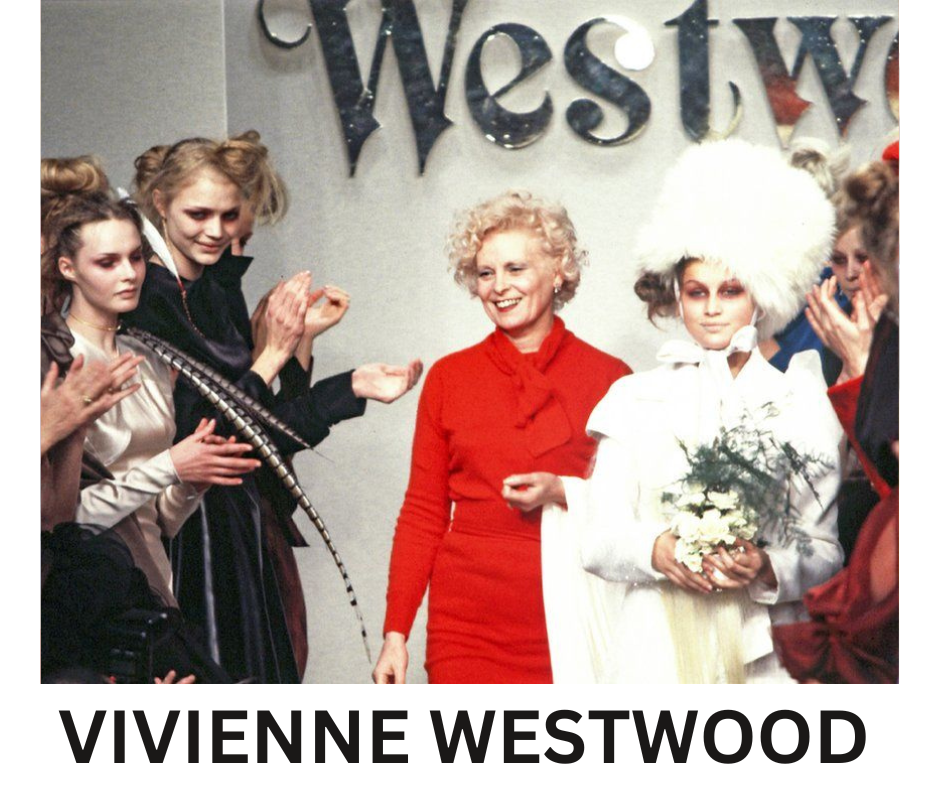Vivienne Westwood brought centuries-old fashion trends into today’s era and shaped them into a style that continues to influence today’s fashion industry. You could say Westwood was born to become a fashion designer, as her father was a shoe mender and her mother worked at a cotton mill in a small town in England called Glossop in 1941. However, before she ventured into the fashion world, her life would first lead her to a career in education as a teacher.
Everything changed when she met her second husband, Malcolm Mclaren. As an art student, Mclaren introduced her to the world of creative freedom and the power of art. Together, they set their sites on a career in fashion by opening a boutique in London and filling it with her designs, starting in the 1970s. Mclaren ventured to a different career path and began managing the Sex Pistols, and Westwood would provide her skills as a stylist. According to a recent CNN article, “Westwood traded punk for high fashion.”

Inspired by the punk movement’s idea to reject mainstream trends, Westwood tore up the rule book for fashion to create a new style by effortlessly mixing style trends from centuries past and bringing them into the current era. 1990s fashion trends often featured poofy skirts, leather jackets, blazers, and plaid flannel shirts, whereas Westwood used royal iconography, art, and religion as motifs in her collection. This created a sense of rebellion against the mainstream style trends of the time that attracted people to her designs and her notions of raw beauty and power.
In 1987, she unveiled a corset as outerwear called ‘Statue of Liberty’. Westwood used her designs as a recollection of 1700s fashion and redefining the corset to no longer be known as an undergarment. The conical shape of the corset and how the undergarment was not supposed to be seen were used as a symbol of the patriarchy’s control over women’s bodies. Her collection inspired by 1700s style trends was a statement for reclaiming female power.
Vivienne Westwood’s Fall 1995 Ready-to-Wear collection introduced a rework of her ‘Statue of Liberty’ corset with Rococo art as the center image and textured gold trim on the straps with models draped in pearls. Naomi Campbell strides across the runway in a floor-length skirt that creates a cone shape. Her corset is made of silk and gold threads with four bows on the chest combined with a tulle sleeve.
If you are shopping at Urban Outfitters, Forever 21, or Dolls Kill, you will find a corset thanks to Vivienne Westwood. Celebrities like Bella Hadid, Dorit Kemsley, and FKA Twigs have been spotted wearing the iconic corset. Corsets as outerwear have raised increasingly in popularity over the years, partly in effect to affordable brands making the clothing more accessible. It has become a staple piece in every young woman’s closet because of its versatility and ability to elevate any outfit. Although, these items will not have the same quality, thought, and history behind the corset; Vivienne Westwood changed a generation of closets and withstands the test of time.





